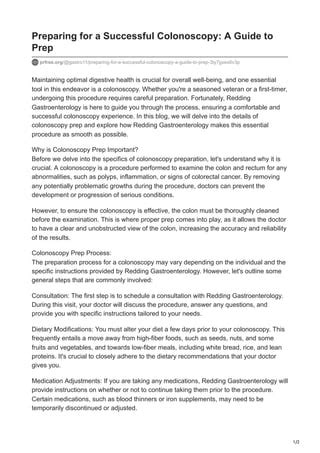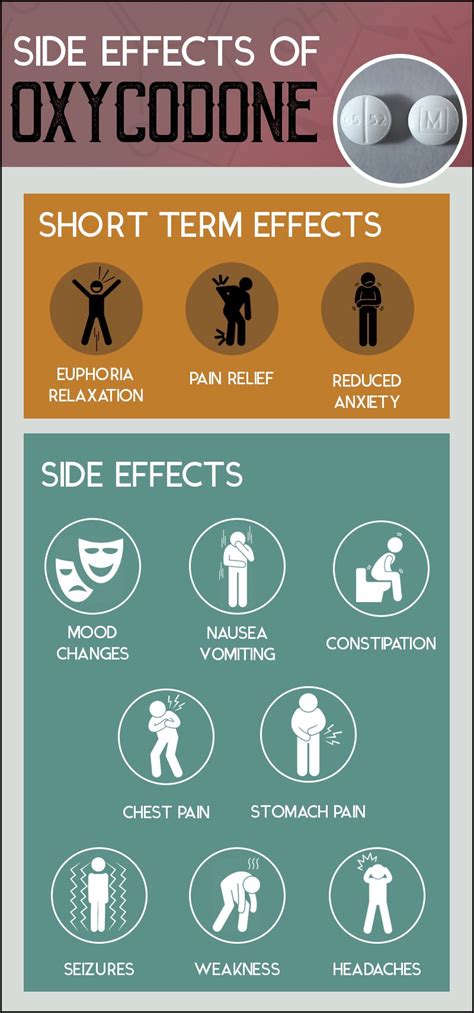When it comes to maintaining gastrointestinal health, one of the most effective tools available is the colonoscopy. This minimally invasive procedure allows medical professionals to examine the inner lining of the colon and rectum, detecting and removing polyps and other abnormalities before they become cancerous. However, the key to a successful colonoscopy lies not just in the procedure itself, but in the preparation that precedes it.
Understanding the Importance of Preparation
Preparation for a colonoscopy is a critical step that cannot be overlooked. The process involves cleansing the bowel to remove any fecal matter, allowing the doctor to get a clear view of the colon and rectum. This is typically achieved through a combination of dietary changes, laxatives, and sometimes, an enema. The goal is to ensure that the bowel is as empty and clean as possible, which can significantly impact the accuracy and effectiveness of the procedure.
Dietary Changes: The First Step
The journey to a successful colonoscopy often begins with dietary adjustments. Patients are usually advised to follow a low-fiber diet a few days before the procedure, gradually moving to a clear liquid diet the day before. This involves avoiding solid foods and focusing on clear broths, electrolyte-rich beverages like sports drinks, plain water, and possibly, clear juices without pulp. The rationale behind this approach is to reduce the amount of residue in the bowel, making the cleansing process more efficient.
Laxatives and Bowel Prep: The Cleansing Process
Once the dietary adjustments are in place, the next step involves the use of laxatives or bowel prep kits. These are specifically designed to stimulate bowel movements, emptying the colon of any stool. The process can be uncomfortable and may require a significant amount of time spent in the bathroom, but it’s crucial for the success of the colonoscopy. Patients are often provided with detailed instructions on how to take these laxatives, including the timing and dosage, to ensure maximum effectiveness with minimal discomfort.
The Role of Technology in Colonoscopy Preparation
In recent years, technology has played an increasingly important role in enhancing the colonoscopy experience. From digital tools that help track bowel prep progress to innovative laxative formulations that reduce side effects, technology is making the preparation process more manageable and efficient. For instance, mobile apps can provide patients with personalized preparation schedules, reminders, and dietary advice, ensuring they stay on track and are well-prepared for the procedure.
Managing Anxiety and Discomfort
For many individuals, the prospect of undergoing a colonoscopy can be a source of significant anxiety. The preparation process, particularly the bowel cleansing, can be uncomfortable and may cause temporary side effects such as bloating, cramping, and electrolyte imbalances. However, there are several strategies that can help mitigate these issues. Staying hydrated, taking the laxatives as directed, and maintaining open communication with healthcare providers can significantly reduce anxiety and discomfort. Additionally, understanding the importance of the procedure and its potential to detect and prevent colon cancer can provide a sense of purpose and motivation.
The Procedure: What to Expect
On the day of the colonoscopy, patients can expect to arrive at the medical facility and undergo a series of preparatory steps. This may include changing into a gown, removing any jewelry or metallic objects, and undergoing a brief medical questionnaire to ensure they are ready for the procedure. The colonoscopy itself is typically performed under sedation, which helps the patient relax and reduces the likelihood of discomfort. The procedure involves the insertion of a flexible tube with a camera and light on the end into the rectum, allowing the doctor to visually examine the colon and remove any polyps or abnormal tissue found during the examination.
Recovery and Follow-Up
After the colonoscopy, patients are taken to a recovery area where they can rest until the sedation wears off. It’s common to feel a bit groggy and experience some gas or bloating, but these side effects are usually temporary. Patients are advised to have someone accompany them home, as they should not drive or operate heavy machinery for the remainder of the day. Follow-up care involves monitoring for any signs of complications, such as bleeding, and scheduling a follow-up appointment to discuss the results of the procedure. If polyps were removed, the pathology report will determine if any further action is required.
Conclusion: Empowering Yourself for a Successful Colonoscopy
A successful colonoscopy is the culmination of thorough preparation, state-of-the-art medical technology, and high-quality care. By understanding the importance of each step in the process, from dietary adjustments to the procedure itself, patients can empower themselves to take an active role in their gastrointestinal health. Whether it’s embracing the latest technological innovations, managing anxiety, or simply being well-prepared, the path to a smooth and effective colonoscopy experience begins with knowledge and ends with peace of mind.
What is the primary purpose of a colonoscopy?
+The primary purpose of a colonoscopy is to examine the inner lining of the colon and rectum for polyps, cancer, and other abnormalities, allowing for early detection and removal, which can significantly reduce the risk of colon cancer.
How long does it take to prepare for a colonoscopy?
+Preparation for a colonoscopy can begin several days in advance with dietary changes and typically involves a full day for bowel cleansing with laxatives or a bowel prep kit. The exact timeframe can vary based on the specific instructions provided by a healthcare provider.
Is a colonoscopy painful?
+Most patients do not experience pain during a colonoscopy due to the use of sedation. However, some may feel discomfort or pressure during the procedure. The preparation process, particularly the bowel cleansing, can cause temporary discomfort, including bloating and cramping.
Remember, a successful colonoscopy is not just about the procedure; it’s about the journey to it. By understanding and adhering to the preparation guidelines, embracing technological advancements, and maintaining open communication with healthcare providers, individuals can ensure a smooth and effective experience, contributing to their long-term gastrointestinal health and well-being.


